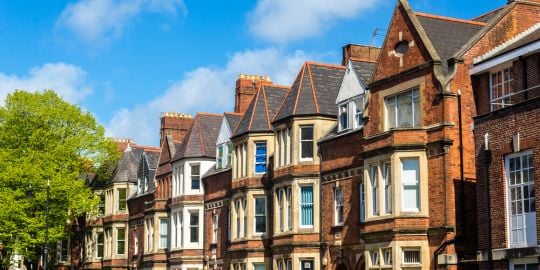Hello everyone,
Adjusting to new climatic conditions is key in any expatriation process. Moving to Honduras is no exception.
What are the climate characteristics of Honduras?
How does the local weather impact your daily life, mood or health?
What are the pros and cons of the climate in Honduras?
Share you advice and help people adapt quickly to their new weather environment.
Thanks in advance,
Priscilla
Adapting to the climate in Honduras
There are three climate systems in Honduras and two seasons.
There is the north coast hot tropical and humid from San Pedro Sula all the way to the Mosquitia, the cool central mountain highlands and the very hot dry south coast.
The rainy season which is relatively fresh is from may to december. There are some northern cold fronts during november, december and january. The dry season is from december to may. The hottest months are march and april which are also the slash and burn, smoky months.
Jorge gave a very good explanation above. Adaptation depends on where you are coming from and where you are moving to. I live in Roatan where it is a Caribbean climate soothed by the trade winds which lower the humidity and the feel of the temperature on your skin. The north coast doesn't have the benefit of the constant breezes. If you come from the south eastern USA there would be little adaptation. You would be used to the higher humidity and it would actually feel more pleasant. Right now I am in Valle de Angeles, in the mountains a half hour from the capital, Tegucigalpa. I was originally from Vancouver, Canada. The climate is very similar. However I have lived in Roatan for 14 years so i froze to death for the first 3-4 days. I adapt fast. In 2 weeks I can be fine almost anywhere. Some people can never adapt.
My advice is if you plan to live in an area in Honduras long term and from your vacation experience find you don't adapt well or enjoy certain climates, choose an area of the country that mimics where you come from. We have it all here.
Oh, I forgot to mention the weather in the Bay Islands!!! It is just fantastic! I lived in La Ceiba, Cayos Cochinos and Roatan and the Trade Winds breeze is the best.
I recall a map made by a british lieutenant in the 1700s that is reprinted as a souvenir and his notes comment on how delicious the breeze is. I think he even calls it "medicinal". I call it that. It is so constant that the trees in some parts are "combed" by them.
But beware of a "norte". It is a northern storm. They are common in the winter
Honduras for the most part is extremely hot and muggy. Take good care of your skin. You should see a dermatologist once a year, to check for skin cancer. Drink lots of water!!! Dehydration can be serious. Do not over exert yourself on arrival. Use skin block for snorkeling and diving. Hope that this is helpful!
We lived in Honduras for two years and travelled between San Pedro, Siguatepeque, La Esperanza, Tegucigalpa and Copan Ruinas. So we had a lot of experience with year round weather for the western half of the country. My advice for MOST people who want pleasant weather year-round is to get into the mountains! At altitudes below 3000 feet, it's just too darn HOT! If you are coming from a hot, humid area and are accustomed to extremely hot and unpleasant weather, stay on the north coast below 3000 feet. La Esperanza was at 6000 feet and was pleasant all year (except when the rains were pouring every day and that's everywhere in Honduras during the rainy season.) Siguatepeque is a small town north of Comayagua, and it's at 3400 feet. Almost perfect weather. Copan was too hot because it is somewhere between 1000-2000 feet. Sure, the beach on the coast is nice for a few days in the late fall, but if you're going to live in the country year-round, get into the mountains! We visited Antigua, Guatemala for four days and it was great. 4500 feet. Good Luck.
Good information. If you are going to be in a hot and muggy environment, remember the beers are tasty, just not too many of them. A hangover in a hot climate is horrible. You may find yourself eating more salt and I would suggest taking good vitamins.
Mostly agree. But we have good friends in La Esperanza and have been there many times. For much of the year it is nice but in the winter it can get to freezing, like the dogs water has to be thawed out so they can drink it. Of course it warms up a lot in the daytime but most people have fireplaces and use them. So 6,000 feet is a bit too much. The low altitudes are definitely too hot and humid. The exception is Roatan. It is cooler than San Pedro, etc and has the constant Trade Winds to keep it pleasant. The climate is very much like Hawaii.
A place I really like is 20 km from Tegucigalpa on the road south to Choluteca . It is the area around Cerro de Hula. It is where the 55 wind turbines are (which you can see from Tegus. (they are building more now)
The weather there is windy (of course!) and very cool all year round. At 5 pm be ready with a good jacket. On clear days which is most of the year, you can see the pacific ocean s Gulf of Fonseca, some mountains and volcanoes from Nicaragua and a couple of volcanoes of El Salvador. (take your binoculars) Not far from there there is a part of the road called Ventarrones (Strong Winds) You can see the pine trees bent and combed from the year round wind.
When in Tegus, go to the towns of Ojojona, Santa Ana and San Buenaventura. On the way to Ojojona theres a family comedor (eatery) called Los Fogones where they serve really good traditional Honduras food especially Mondongo which is a soup (fridays saturdays and sunday) along with Carne asada, and other dishes. Go early because it gets packed on weekends!
My girlfriend is from Sabanagrande, just south of the windmills. Very pretty town and a nice climate as well. No a/c needed to sleep at night.
Best of Life!
Edward
Go to the Mountains! Above 3400 feet the weather is almost always beautiful.






